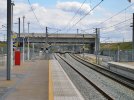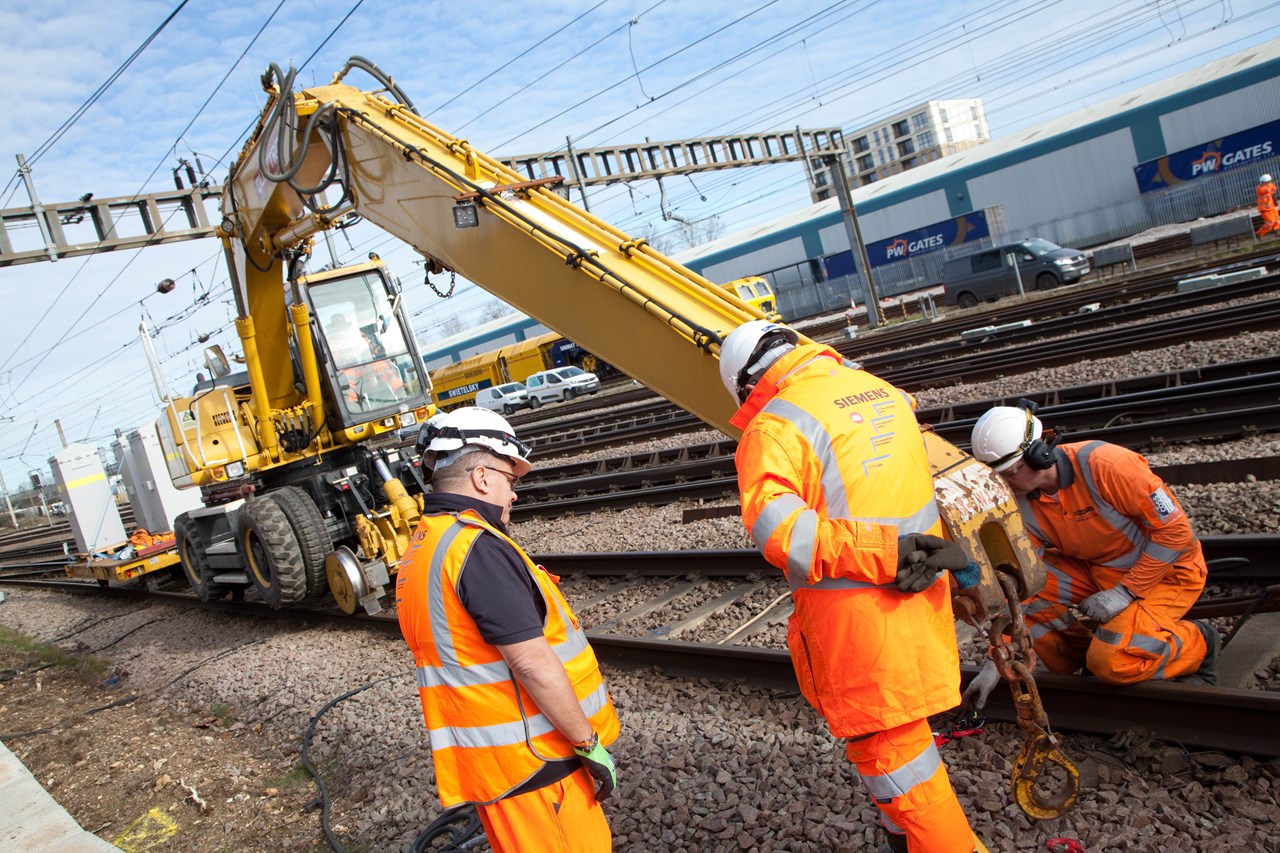Traditional signals – the ‘traffic lights’ at the side of the track – have been used in one form or another since the route between Finsbury Park and Moorgate opened 121 years ago.
These signals were removed at the weekend (17/18 May) as part of the £1.4bn East Coast Digital Programme (ECDP).
In their place, drivers are being told how far and how fast they can travel on an in-cab train computer screen that is fed information from a digital signalling system known as ETCS (European Train Control System).
This digital signalling system will give passengers greater reliability and better punctuality. The system is also even safer and more environmentally sustainable as there is much less physical equipment to produce and maintain.
Rail Minister Lord Peter Hendy said: “Thanks to £1.4bn of Government funding this cutting-edge programme is bringing our railways into the 21st Century and beyond.
“Digital signalling is not only more cost effective, but even safer and more resilient than traditional signalling. This technology, which is as advanced as it gets, could reduce delays by up to a third, evidence that this Government’s Plan for Change is making a real difference to people’s everyday lives.
“This is a Government on the side of working people and, through ambitious projects like this this one, is improving vital access to jobs, services and loved ones.”
Ed Akers, industry partnership director, ECDP, at Network Rail, said: “This milestone represents a real step forward in how we work together as an industry to deliver change, with a deep collaboration across track and train. The learnings we have had from delivering a no signals railway in the heart of London, are what will enable us to deliver a railway transformation on the East Coast Main Line and then nationally.
“I want to thank our partners for their tireless work in making this happen, and also passengers for their patience while the work of transformation continues.”
Oliver Turner, head of ERTMS and digital signalling at Govia Thameslink Railway, said: “This is a huge achievement, doing away with signals and moving to digital control on such an intensive commuter route. For the past 200 years there’s always been something physical at the side of the tracks.
“In terms of modern signalling this is as cutting edge as it gets; it’s like moving from a Nokia 3210 to an iPhone 16. It effectively allows our drivers to see around corners by telling them how far and how fast they can travel. They can drive more smoothly and efficiently, to the best of the train’s capabilities, helping them arrive on time and doing so in even greater safety.
“Our train crews have been brilliant in the way they’ve migrated to this new way of working and taking on board a lot of new learning and I am also incredibly proud of the team here at GTR for what they’ve achieved alongside our industry partners.”
Ben Lane, infrastructure lead and ECDP project director at Siemens Mobility UK&I, said: “This weekend, our engineering teams began removing lineside signals from the Northern City Line - a visible sign of how digital technology is transforming our railways. By integrating our ETCS solution with our Siemens Mobility Class 717 trains, we can see how important it is to bring track and train together.
“We will now see further benefits of ETCS on this route - from reduced maintenance and fewer disruptions to smoother, more reliable journeys for passengers. This achievement sets the standard for digital rail transformation across the UK and shows what's possible when industry partners collaborate to put passengers first.”
A no-signals railway was introduced as an early pilot on the rural Cambrian line in 2011. This is the first time it has been introduced on a high-frequency metro railway. With work now under way to extend the system on to the East Coast Main Line and emerging plans to introduce it elsewhere in the country, digital signalling is projected to create significant cost savings long-term and play a key part in the future of the railway.
Passengers have seen dramatic advances on the Northern City Line, which runs mostly underground, serving six stations on its 3.5-mile route between Finsbury Park and Moorgate.
Delivering such a change across track and train requires industry wide collaboration, and this initial project has proven the success of the unique delivery model involved.
As recently as six years ago, Govia Thameslink Railway (GTR) was operating Great Northern services along the route with the UK’s oldest mainline electric trains (Class 313s that entered service 42 years earlier, in 1976), on a signalling system that worked with air-operated ‘trip cocks’.
Since then, GTR has introduced a £240 million fleet of digitally-enabled Class 717 units, and Network Rail and Siemens Mobility have comprehensively replaced and upgraded the signalling infrastructure. Many months of testing and commissioning has followed alongside extensive driver training.
Industry experts have highlighted the transformative change as symbolic for the industry as it celebrates the 200th anniversary of the birth of the modern railway in 1875 [
sic].
Over the weekend other ECDP work took place involving further digital signalling testing between Welwyn Garden City and Hitchin (this will become the first mainline section to operate with ETCS) and preparatory digital signalling work between Biggleswade and Peterborough.
Notes to Editors
The Northern City Line has been steadily migrating to the new European Train Control System (ETCS) digital signalling system. Passenger services had already been using ETCS but the traditional signals remained in place. Over the weekend of 17–18 May 2025, Siemens Mobility engineers took the final step to switch off and remove the legacy signalling infrastructure, marking the full transition to digital operations.
This is the first ‘no signals’ conversion on the national rail network since the Cambrian Line pilot in 2011, and the first of its kind in a busy, metro-style passenger corridor.
ETCS is in operation on the Thameslink ‘core’ section in the heart of London between London Bridge and St Pancras International but conventional lineside signals are still in place and operate in tandem.




